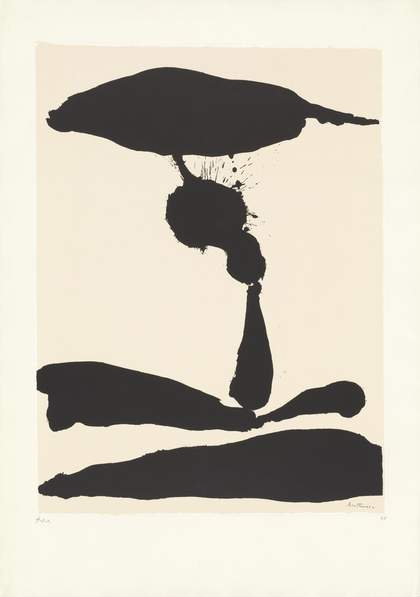The two artists in this room use the colour black and abstract forms to draw attention to how materials can express hidden stories and emotions
Motherwell made this set of screenprints Africa Suite in 1970. Part of the abstract expressionist movement, he created this series of ambiguous black forms through freely experimenting with ink on paper. In these abstract shapes, he saw the potential of an emotion forming, although not yet defined.
The silkscreen printing technique is similar to stencilling. Motherwell was satisfied with the effect created for this series but preferred other printing techniques. He once explained that ‘Silkscreen is essentially a clumsy medium … If you try to modulate silkscreen, it is very difficult, the way it is difficult to modulate gouache or poster paintings.’
Born twenty-four years after Motherwell, Chase-Riboud creates abstract sculptures and works on paper. She plays with oppositions so that hard materials appear soft, and soft materials appear strong. She has said ‘I was exploring the dynamics of opposing relationships … the metamorphosis of power from one to the other.’
Chase-Riboud’s work on display in this room is part of her series Zanzibar, the island off the coast of Tanzania that was the base for the Indian Ocean slave trade from the 17th to the 19th century. Fascinated by sculpture’s ability to subvert expectations, she makes works that seem to defy their material. Here she uses the ‘lost wax’ method of casting bronze on thin sheets to allow it to flow, creating a ripple effect.
The room also features Chase-Riboud’s poem Why Did We Leave Zanzibar? that reflects on the impact of slavery and histories of resistance. Her work as a poet speaks to the potential for words to be used as material, which could be both literal and abstract.

